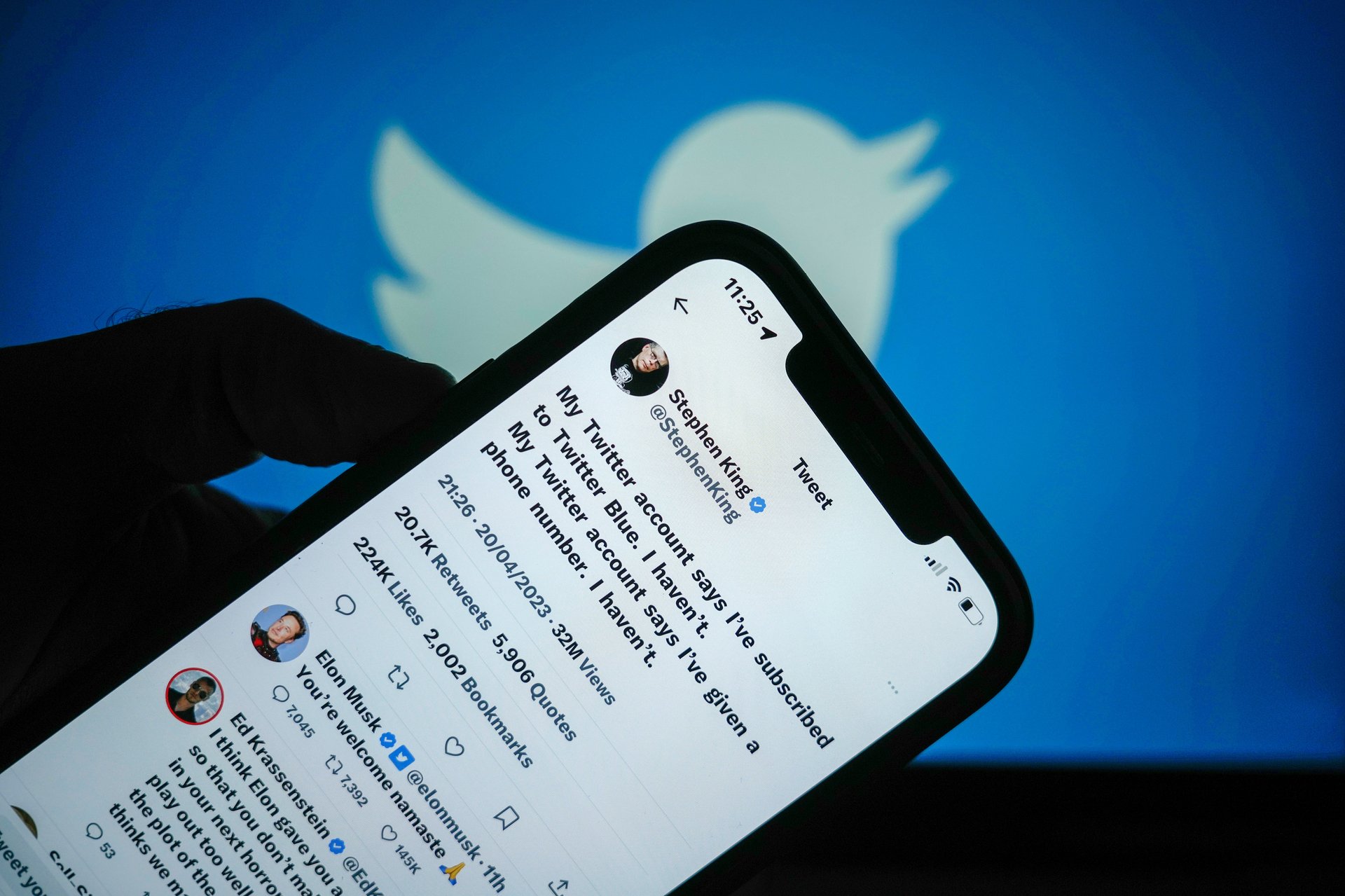The problem with Twitter's blue checkmark is not the $8-a-month cost
Musk degraded the value of the blue checkmark and got mad when Twitter users didn't pay up

I used to pay for Twitter Blue. Back before Elon Musk took over, I coughed up $3 a month to Twitter for the luxury of some nice-to-have features. Blue let me customize the look and feel of the app, allowed me to edit tweets, and most importantly let me delay my tweets so I could curb my most reckless impulses and rescind a tweet before it posted.
As a writer with a chronic Twitter problem, I valued Twitter’s bare-bones subscription service at its market price—but not much more. So, when Musk acquired Twitter in October 2022 with the promise to reduce the company’s reliance on advertising dollars by focusing on subscription revenue through Blue, he raised the price to $8 a month without adding much at all.
Why should I pay $96 a year instead of $36 a year for the same service? There wasn’t a clear answer.
Musk’s mismanagement extended far beyond slapping an unreasonable price tag on Twitter Blue. His biggest error was making Twitter verification the centerpiece of the paid subscription.
As I’ve frequently argued, verifying famous people and notable journalists should mostly be seen as a benefit for Twitter rather than the recipients of the badge. Verification not only helps Twitter users figure out who the real Cher is, but also who’s a real New York Times reporter and who’s an impostor trying to wreak havoc online.
Musk’s myopic view of blue checkmarks as solely a status symbol and nothing more led him astray. First, he conflated so-called legacy checkmarks (the original, verified ones) with the new paid checkmarks, making them virtually indistinguishable. Then, on April 20, he removed all of the legacy checkmarks, leaving just the new paid ones and exposing people who were suckered into paying $96 a year for Blue.
In doing so, he degraded the actual value of the blue checkmark. What’s the point of paying to look famous if famous people don’t actually have the blue checkmark anymore? The blue check is now a shibboleth of who’s in the Cult of Musk, nary a signifier of who has online clout.
Musk’s supporters lash out
The Cult of Musk is filled with all kinds of people: investors, accomplices, fanboys, sycophants, and suckers. (That’s not to say everyone who pays for Blue is one of these; some simply want to edit tweets or post longer videos.)
On April 21, the day after the rapture of legacy blue checkmarks, the Musk Cult was out in full force, stupefied that people—famous and anonymous—wouldn’t pay a measly eight bucks a month for Twitter Blue.
“If you’re a business executive or an entertainer who makes money from your persona in some way, $8 a month for twitter is objectively the greatest bargain in the world,” wrote Jason Calacanis, a tech investor who has advised Musk at Twitter.
“Simplest way for corporate journalists to get blue checks en masse would be for their organizations to go gold and affiliate them. Stop pretending this is a personal expense. It’s a business expense,” wrote David Sacks, a tech investor in Musk’s inner circle. He similarly urged Hollywood talent agencies and sports leagues to pay to verify their clients and athletes. “It’s dumb that Orgs aren’t competing to affiliate their celebs. Benefit far outweighs the cost.”
Some reactions were even more extreme. Essayist Nassim Nicholas Taleb wrote: “I can’t get people who pay thousands, sometimes tens of thousands of dollars for their car lease, country club fees, (rarely used) gym membership, etc. and, while spending a lot of time on TWITTER, refuse to shell out $8 for the service. Despicable, domain dependent misers!”
The anonymous right-wing account CatTurd2, one of the most visible Musk fanboys, called celebrities “elitist snobs ... who won’t pay $8 because they think they’re better than everyone else.”
None of this criticism makes any sense. If it’s so important to Twitter as a platform and a company to verify celebrities, then it should have kept the old system that verified celebrities.
In a presumed moment of panic, Musk announced this week that some celebrities—like novelist Stephen King and basketball star LeBron James—would keep their blue checkmark because Musk was personally paying for them. (James previously said he himself “ain’t paying.”)
King, who publicly sparred with Musk about the price of Blue, is upset that his profile indicates he paid for Blue when he never did so. After all, why would the King of Horror ever stoop so low?
Musk tried to brand blue checkmarks as elitist and corrupt. Now, in his version of Twitter, they’re lame at best and, at worst, a potential breeding ground for mistrust and misinformation that could render the site even less valuable than it is today.
